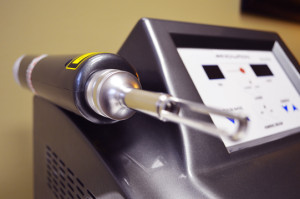 Painful toenail fungus treatment is necessary to prevent recurring infections in the future. Figures published in Podiatry Today show that between 35 and 36 million people in the United States have onychomycosis. Out of these, only about 6.3 million people have visited a physician for diagnosis and treatment. However, failing to seek treatment is not a good idea. Untreated toenail fungus tends to get worse with time and could infect the surrounding skin or even neighboring nails. Some of the best treatment options available include:
Painful toenail fungus treatment is necessary to prevent recurring infections in the future. Figures published in Podiatry Today show that between 35 and 36 million people in the United States have onychomycosis. Out of these, only about 6.3 million people have visited a physician for diagnosis and treatment. However, failing to seek treatment is not a good idea. Untreated toenail fungus tends to get worse with time and could infect the surrounding skin or even neighboring nails. Some of the best treatment options available include:
Antifungal Therapy
A study published by the National Institutes of Health (NIH) shows that antifungal therapy is effective in eliminating toenail fungus. Participants in this study received oral itraconazole and oral terbinafine for a period of 12 weeks. Results show that cure rates were in the 70% range. Researchers involved in this study also found that cure rates for participants who took either terbinafine or itraconazole were more or less the same. After the conclusion of the study, the researchers recommended that people with onychomycosis should continue with antifungal therapy for at least two months.
Laser Therapy for Painful Toenail Fungus Treatment
Laser therapy is another effective treatment option. This type of therapy works by exploiting differences in thermal conductivity and laser energy absorption between toenail fungi and surrounding tissue. In America, the FDA has already approved the marketing and use of several lasers to treat fungal infections. These include CoolTouch VARIA, Q Clear, and Cutera GenesisPlus. Other laser based technologies widely used to treat onychomycosis include solid-state lasers, long pulse laser systems, Q switched laser systems, short pulse laser systems, near infrared diode lasers, and modelocked laser systems. If you opt for laser treatment, make sure it has received approval from the FDA.
Photodynamic Therapy
Photodynamic therapy (PDT) involves the use of a photosensitizing drug and a light source to activate the applied drug. To start with, a doctor applies a light sensitizing liquid or cream on the affected nails. Your doctor may advise you to wait for a few minutes or hours before he/she can proceed with treatment. The final step involves the application of light at a specific wavelength on your nails. This light activates the drug (photosensitizer) applied earlier and selectively destroys toenail fungus.
Thymol Oil
According to a study published in the New York Times, thymol oil can get rid of toenail fungus. It works by inhibiting the growth of dermatophytes that cause onychomycosis. It also inhibits the growth of Candida by destroying its cell membranes and metabolism. Scientists involved in this study recommend applying Vicks Vaporub (contains thymol oil) on the affected toenail at least once every day.
All in all, the best painful toenail fungus treatment includes laser therapy, antifungal therapy, photodynamic therapy, and applying thymol oil on affected nails.


